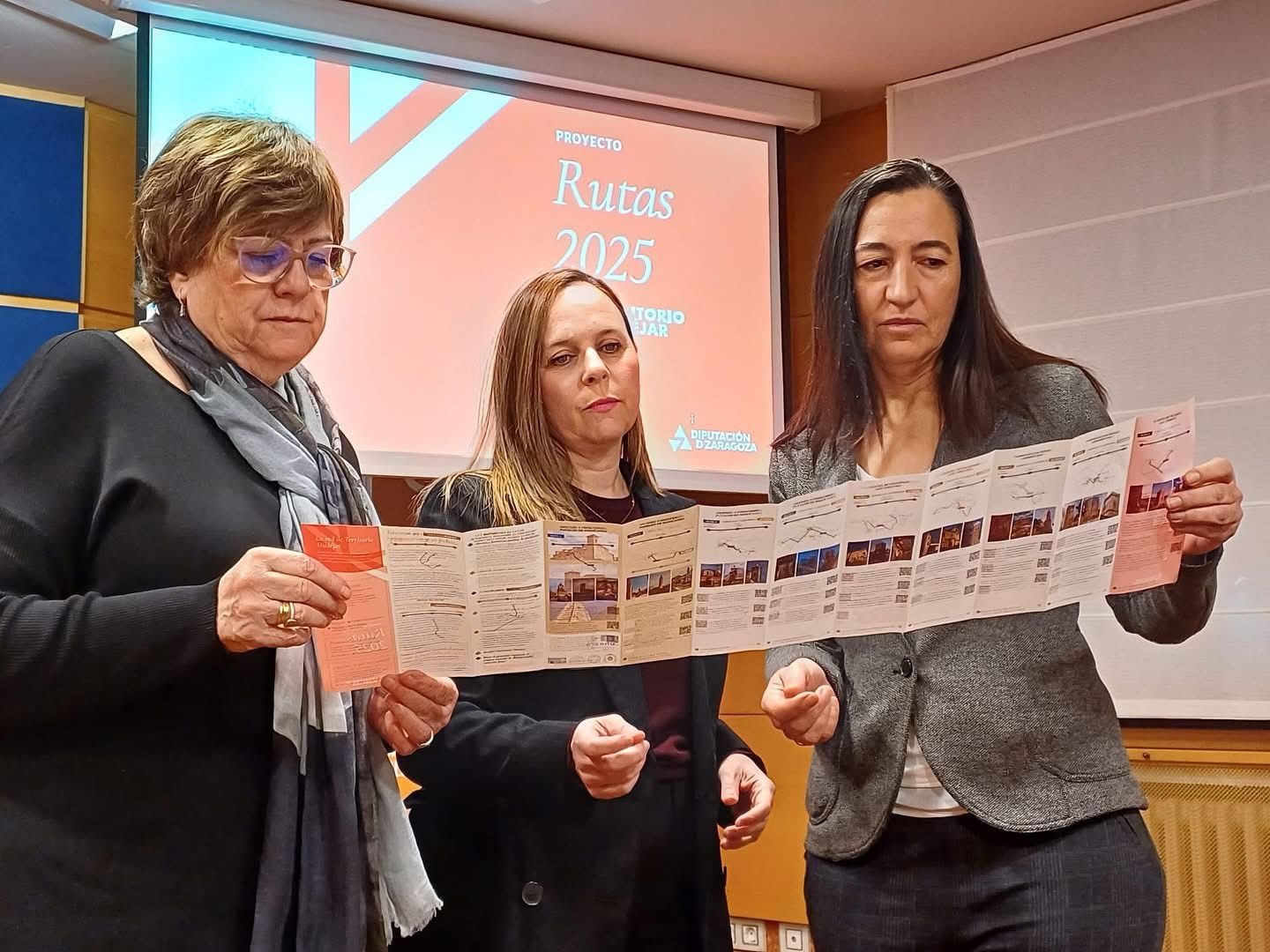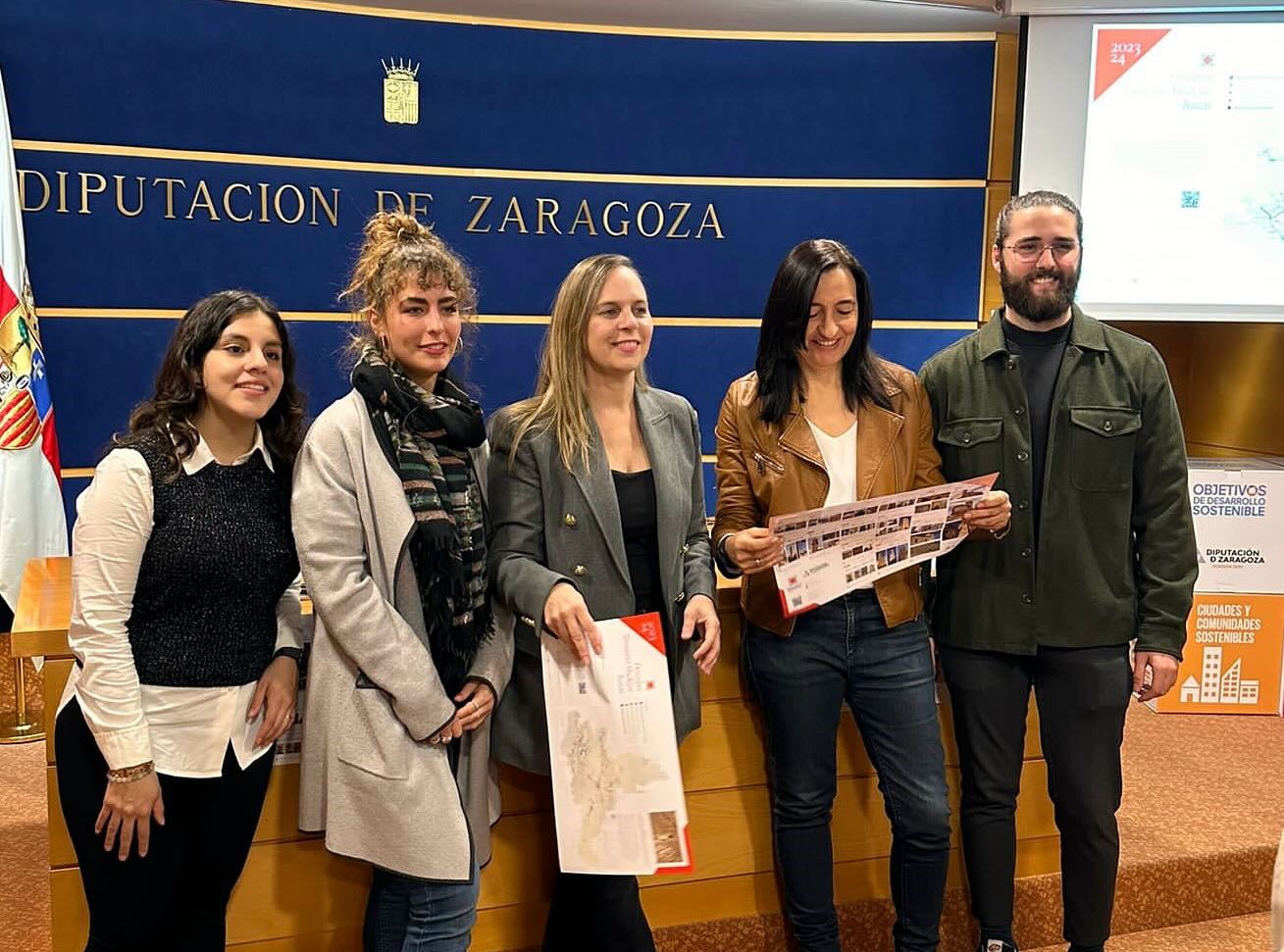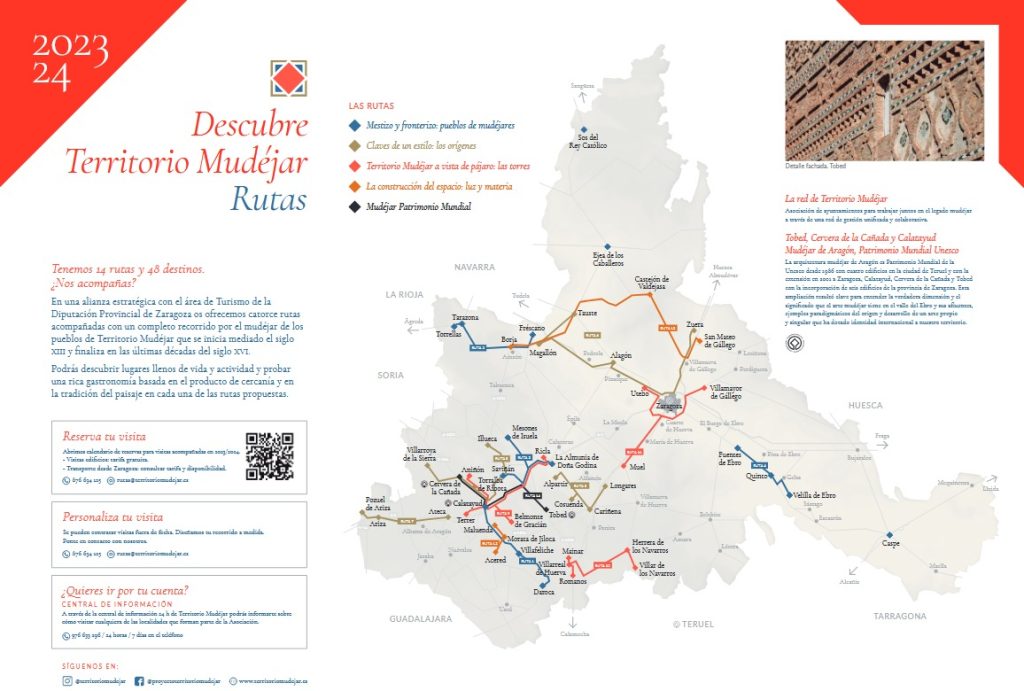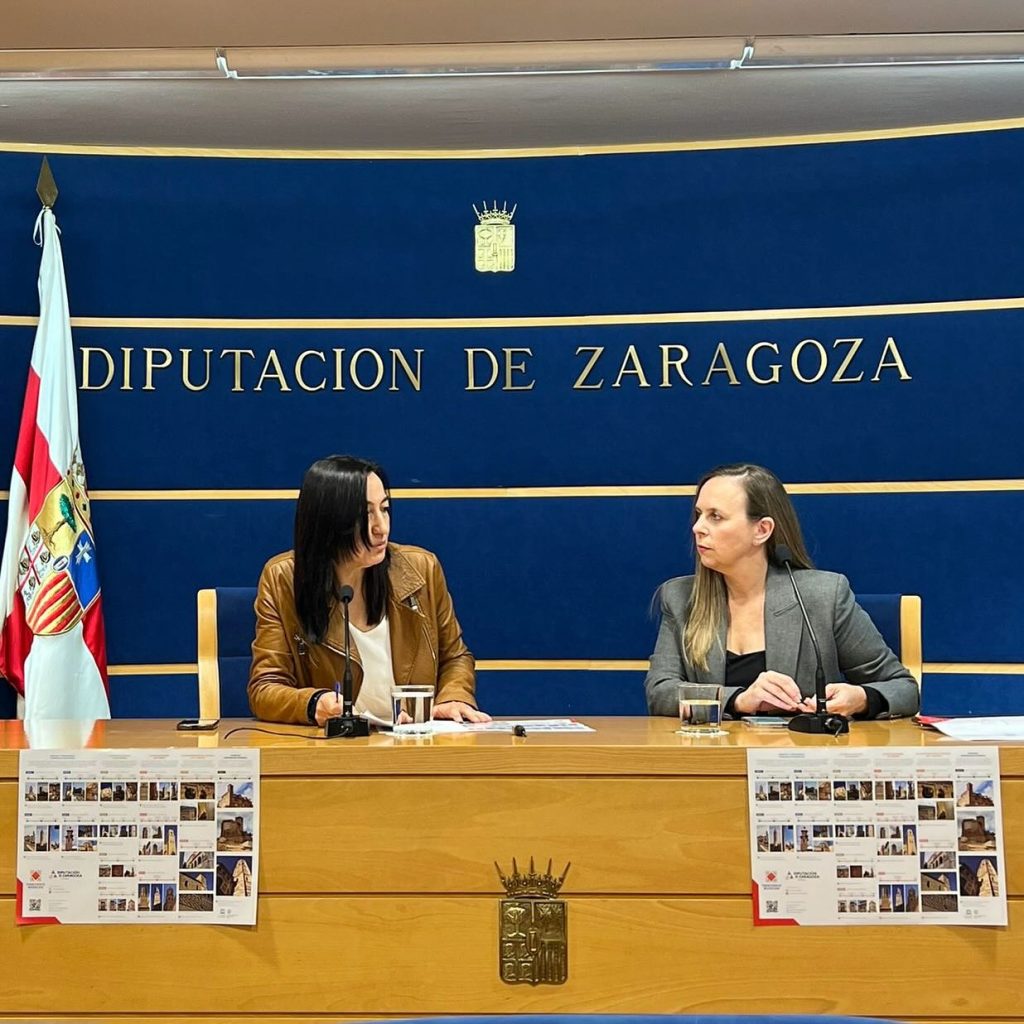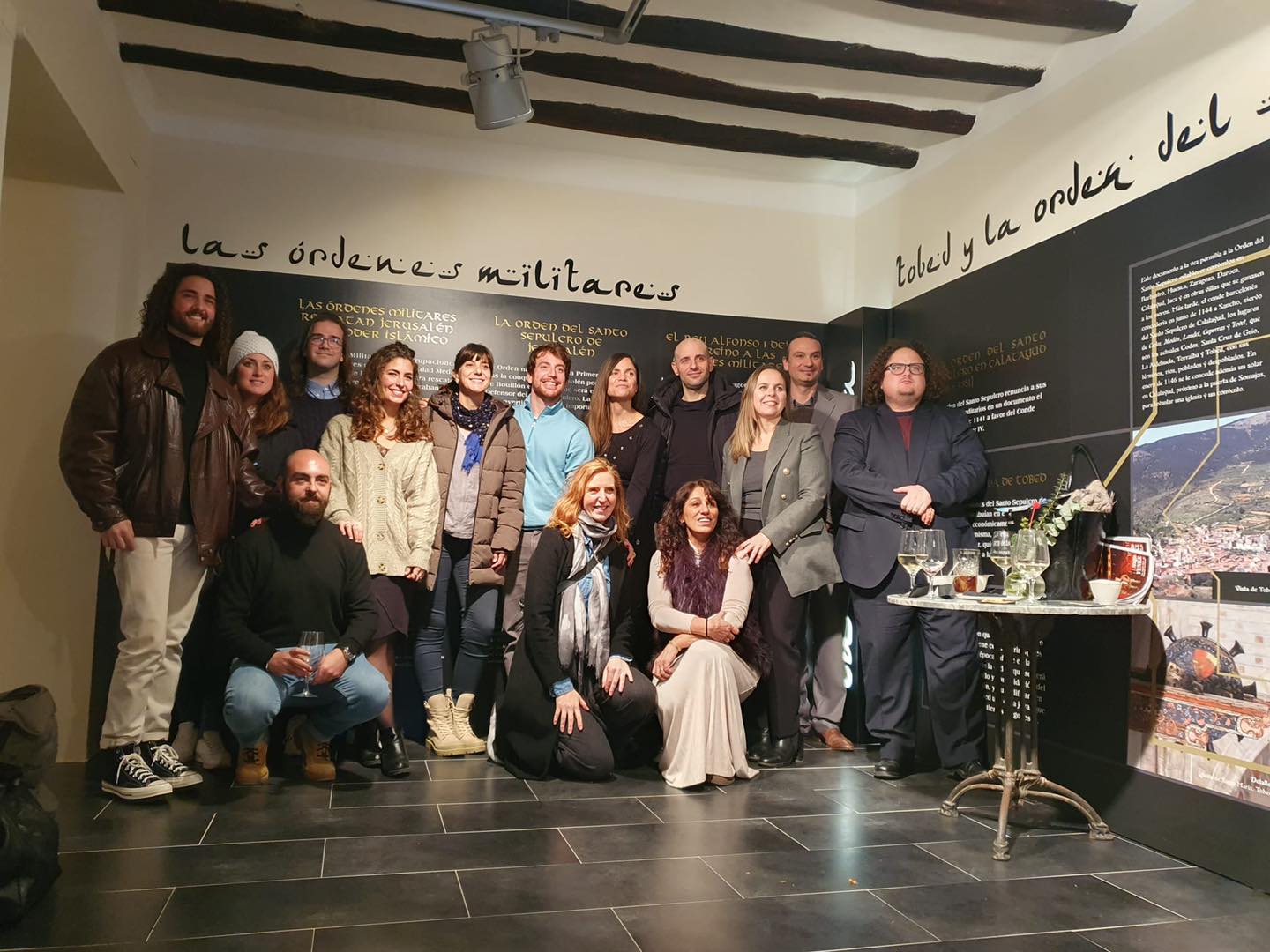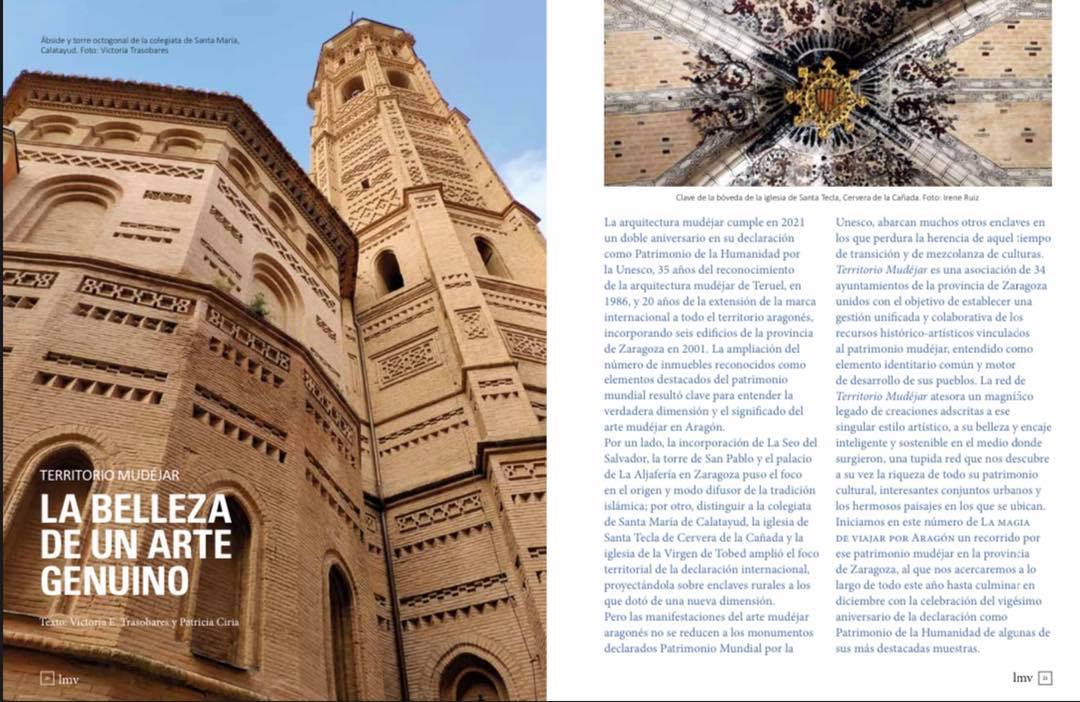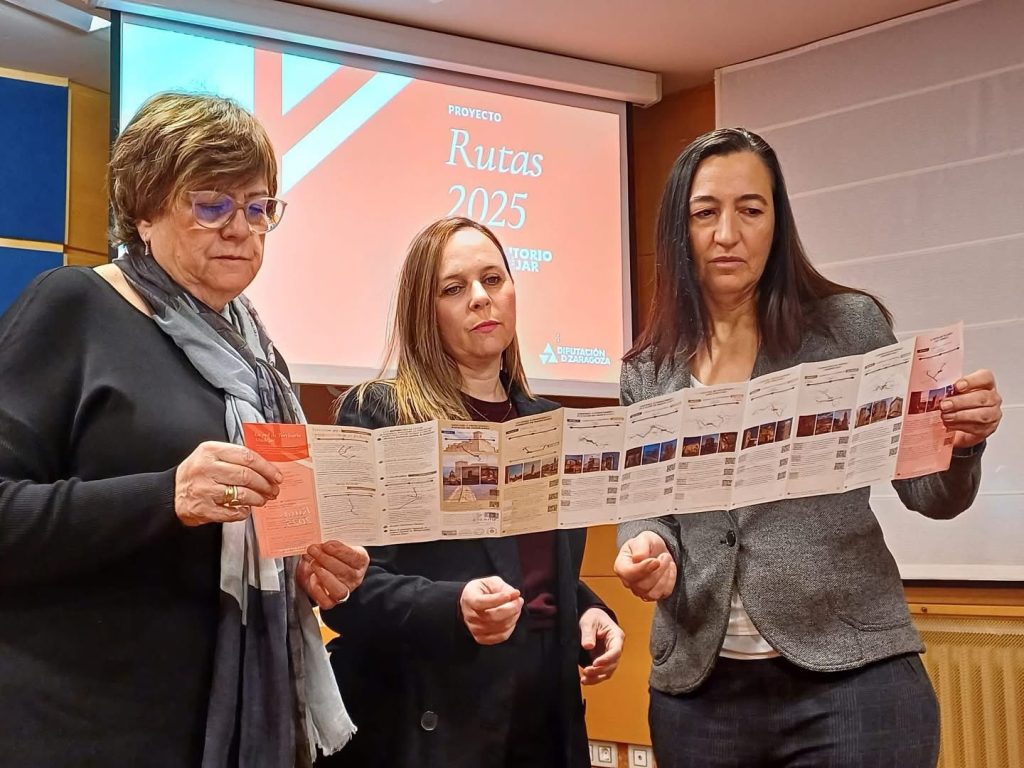
The Territorio Mudéjar network, in a strategic alliance with the Zaragoza Provincial Council, is launching the 2025 edition of its routes with 49 destinations, 19 itineraries, and 36 dates to discover the heritage, culture, traditions, and gastronomy of the municipalities that form part of this entity.
This year, as a new feature, the routes incorporate new options—project or signed routes and a special Mudéjar World Heritage route starting in Zaragoza—and add another destination—Torres de Berrellén, which has just joined Territorio Mudéjar as a partner.
The Deputy Delegate for Tourism of the Zaragoza Provincial Council, Cristina Palacín, and the Director of Territorio Mudéjar, Victoria Trasobares, presented the project this morning.
Reservations are now open and can be made at www.territoriomudejar.es/rutas/. The first itinerary will begin on February 15th, and routes will continue throughout the year.
The organization offers various options for reserving a spot, such as arranging transportation from Zaragoza or dining with the organization’s group at one of the establishments in Territorio Mudéjar’s partner towns. In all cases, reservations are essential.
Admission and guided tours to each destination are free for users who make a reservation, thanks to the discount applied by the Territorio Mudéjar association through funding from the Zaragoza Provincial Council for the organization’s projects.
ROUTE MODALITIES 2025
???? Routes around five themes
The first “Mudejar Territory Villages” package continues the essence of previous editions with 15 itineraries through the province of Zaragoza, guided by heritage specialists and organized into five themes:
1. Mestizo and border: Mudejar villages
2. Keys to a style: the origins
3. Bird’s eye view: the towers
4. The construction of space: light and matter
5. Military orders and territory (new 2025).
Visitors will discover not only magnificent architecture and the finest arts, but also places full of life and activity, enjoy cuisine based on local produce, and learn about centuries-old crafts thanks to collaboration with local businesses.
The UNESCO World Heritage routes will begin in Zaragoza.
The UNESCO World Heritage Route, which covers Calatayud, Cervera de la Cañada, and Tobed, along with its monuments that epitomize the origin and development of Mudejar art, has a new addition for the public this year. The itinerary will begin in Zaragoza, visiting some of the Aragonese capital’s UNESCO-listed monuments, which will be included in the explanations: the Tower of San Pablo (on the April route) and the Parroquieta of the Seo or the Cathedral (on the June and December routes).
Project Routes: Following Professor Gonzalo Borrás
These tours are the result of research projects conducted by the Territorio Mudéjar professional network and will involve, on the one hand, a transfer of knowledge and the application of research results in practical explanations about the territory. Three of these routes will be offered in this 2025 edition. This option will also feature guest speakers from leading experts in the field, such as Professor Esteban Sarasa, a member of the organization’s scientific committee.
